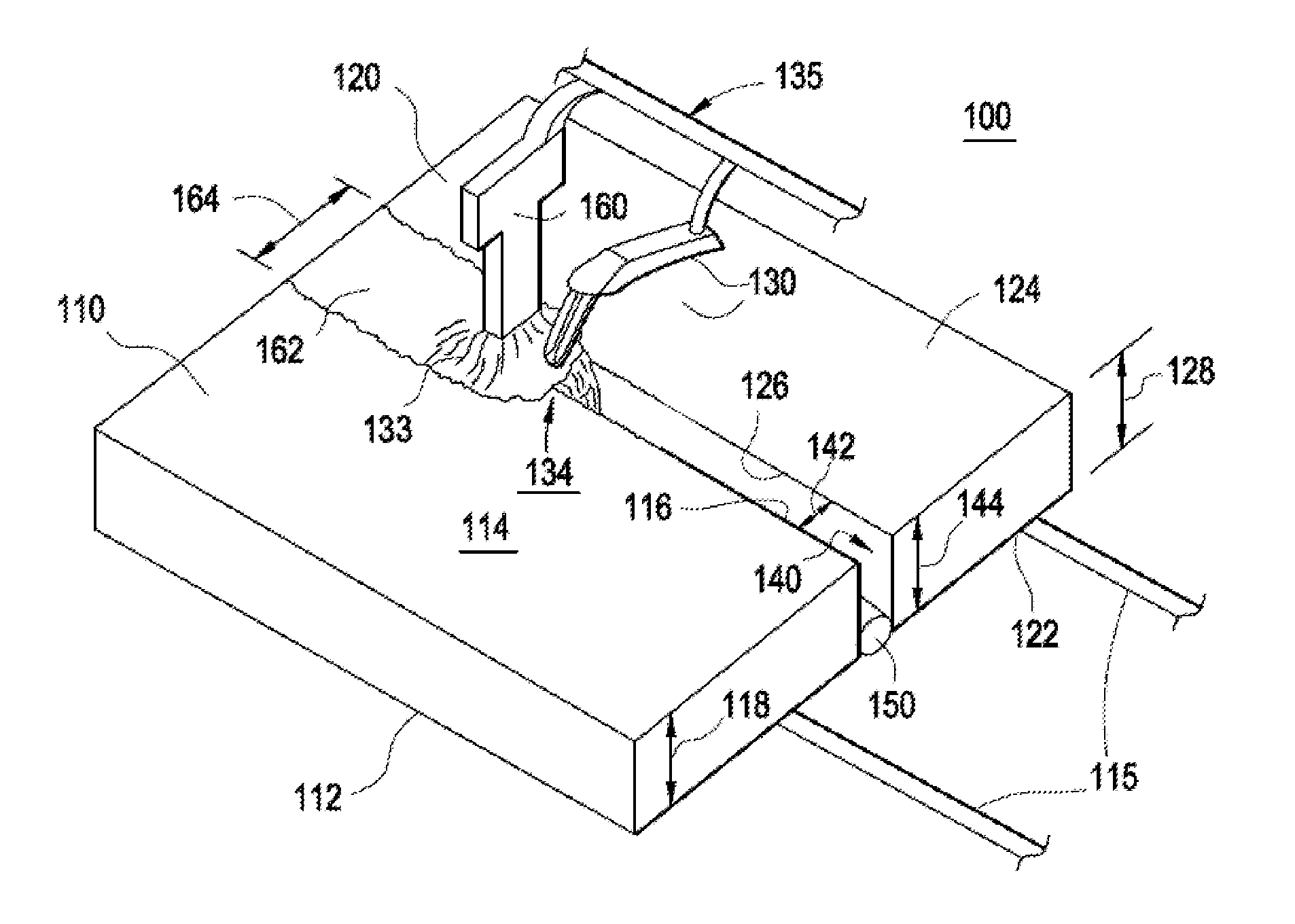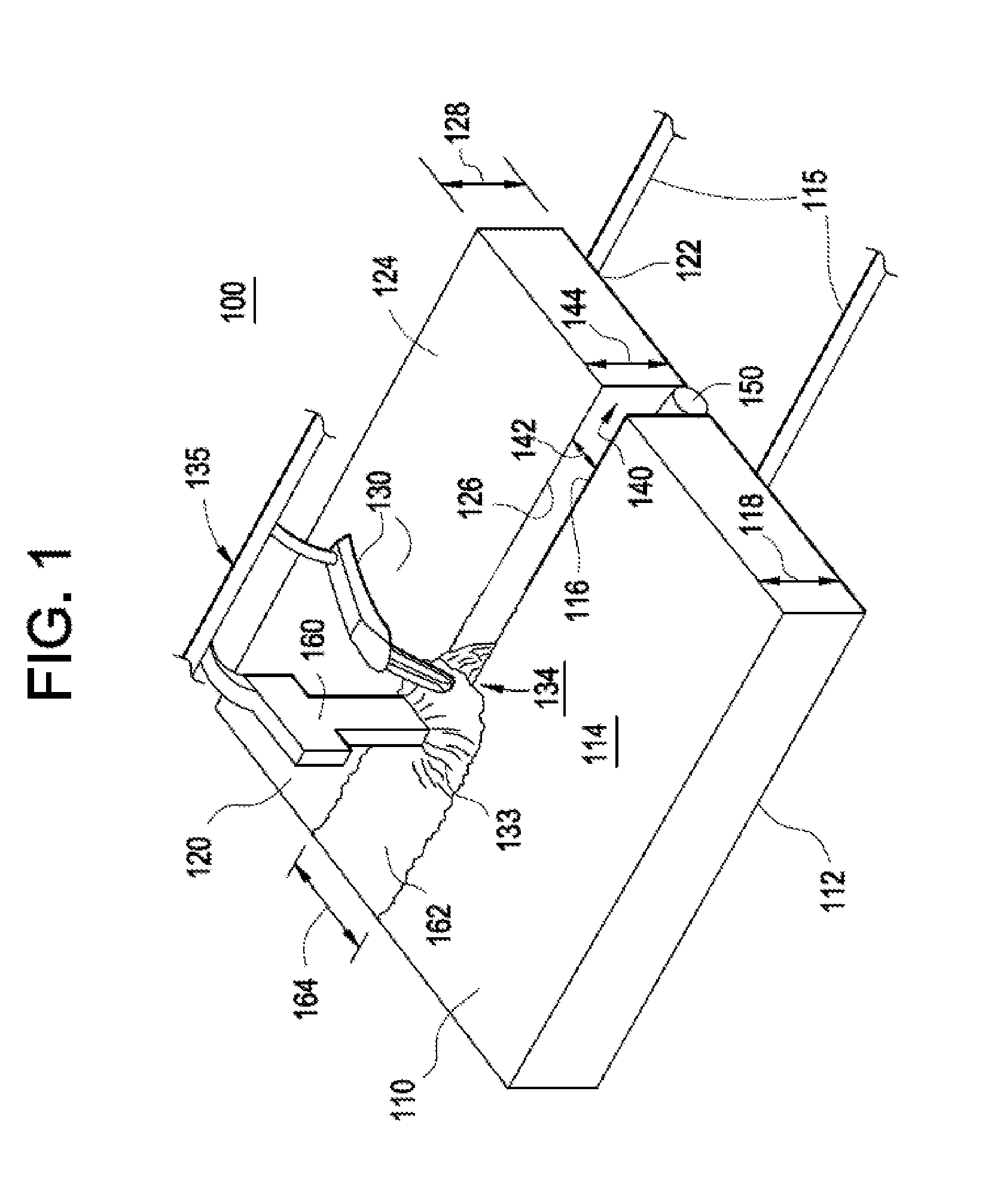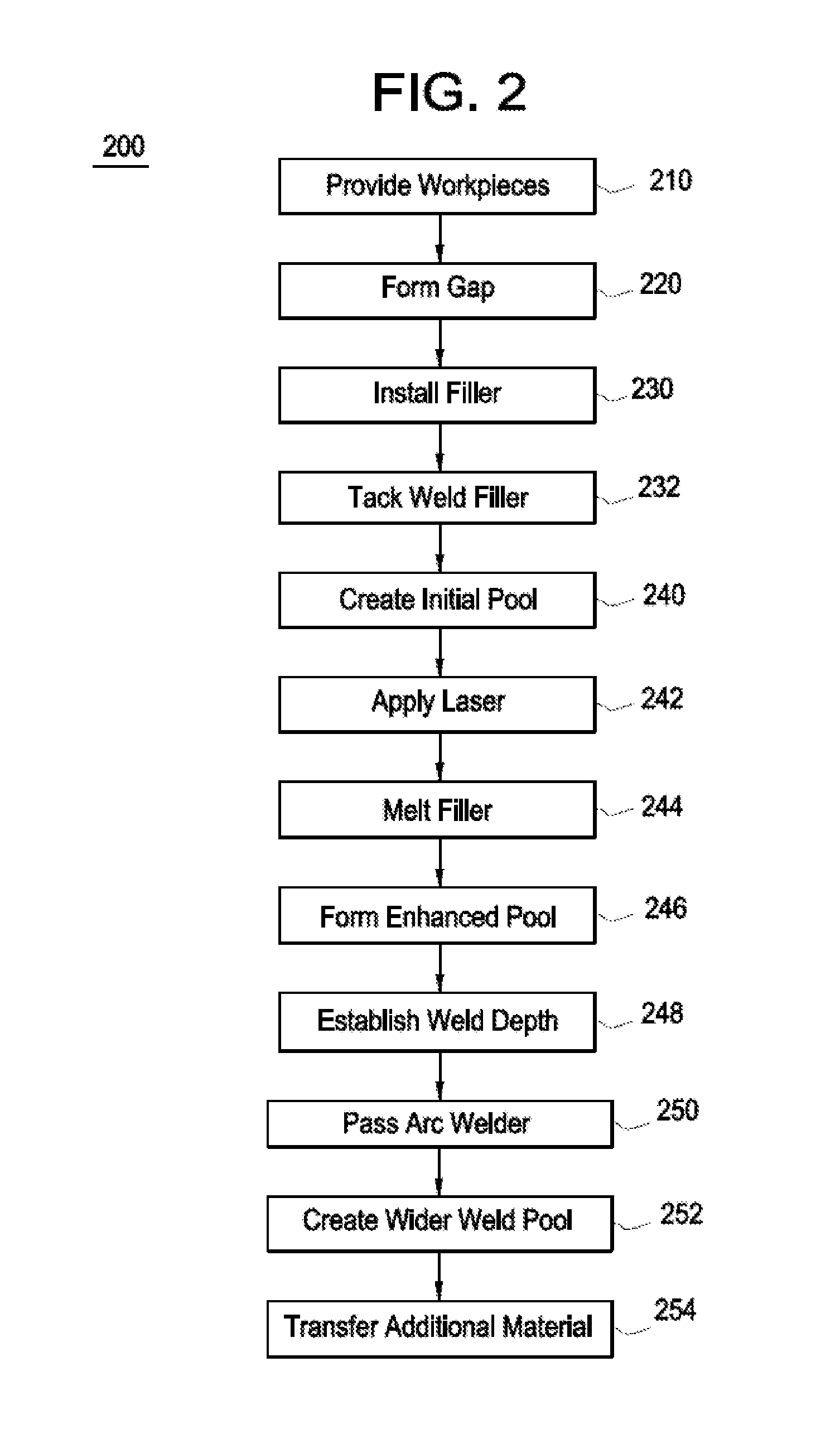Welding system and method
a welding system and welding technology, applied in the field of welding processes, can solve the problems of humping or lack of fusion of weld beads, insufficient power density of typical arcs, and difficulty in deep weld formation
- Summary
- Abstract
- Description
- Claims
- Application Information
AI Technical Summary
Benefits of technology
Problems solved by technology
Method used
Image
Examples
Embodiment Construction
[0018]Referring now to the drawings, in which like numerals refer to like elements throughout the several views, FIG. 1 shows an exemplary welding system using a combination of welding techniques. As shown in FIG. 1, a welding system 100 for joining two or more pieces 110, 120 includes an arc welder 160 that is positioned and configured to follow a gap 140 and to transfer material to the vicinity of the gap 140 so as to create an initial weld pool 133 of a desired width in the vicinity of a gap 140. To accomplish this, arc welder 160 is positioned so as to follow the gap 140 as an electrical arc from arc welder 160 transfers material to the vicinity of the gap 140. In an exemplary embodiment, arc welder 160 forms initial weld pool 133 by transferring weld material from a consumable electrode. The initial weld pool 133 traverses the gap and rests upon the two or more pieces 110, 120.
[0019]A laser welder 130 is positioned and configured to project a laser beam onto the initial weld po...
PUM
| Property | Measurement | Unit |
|---|---|---|
| Thickness | aaaaa | aaaaa |
| Diameter | aaaaa | aaaaa |
| Speed | aaaaa | aaaaa |
Abstract
Description
Claims
Application Information
 Login to View More
Login to View More - R&D
- Intellectual Property
- Life Sciences
- Materials
- Tech Scout
- Unparalleled Data Quality
- Higher Quality Content
- 60% Fewer Hallucinations
Browse by: Latest US Patents, China's latest patents, Technical Efficacy Thesaurus, Application Domain, Technology Topic, Popular Technical Reports.
© 2025 PatSnap. All rights reserved.Legal|Privacy policy|Modern Slavery Act Transparency Statement|Sitemap|About US| Contact US: help@patsnap.com



